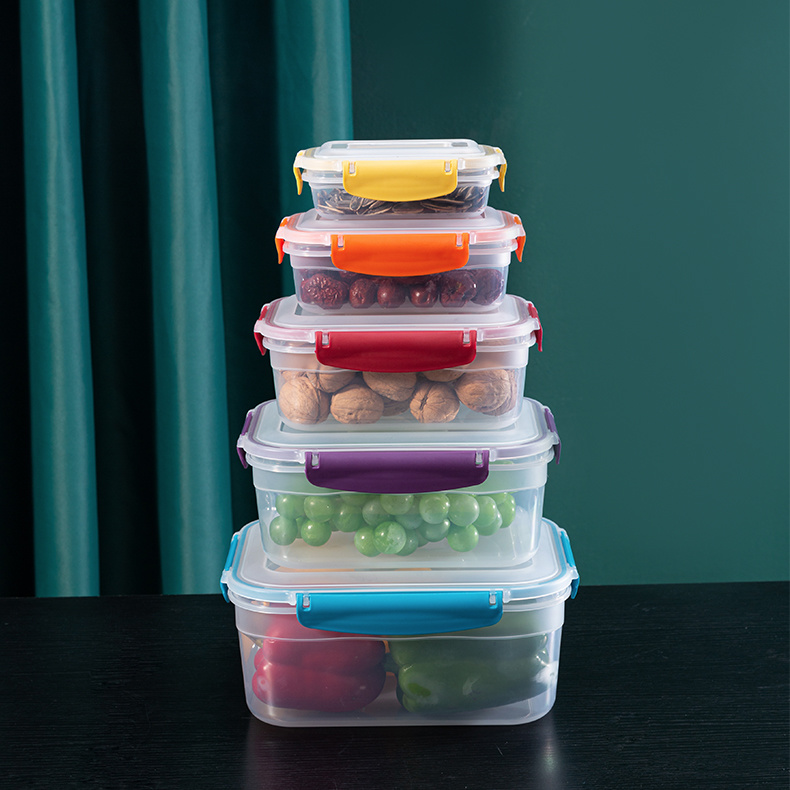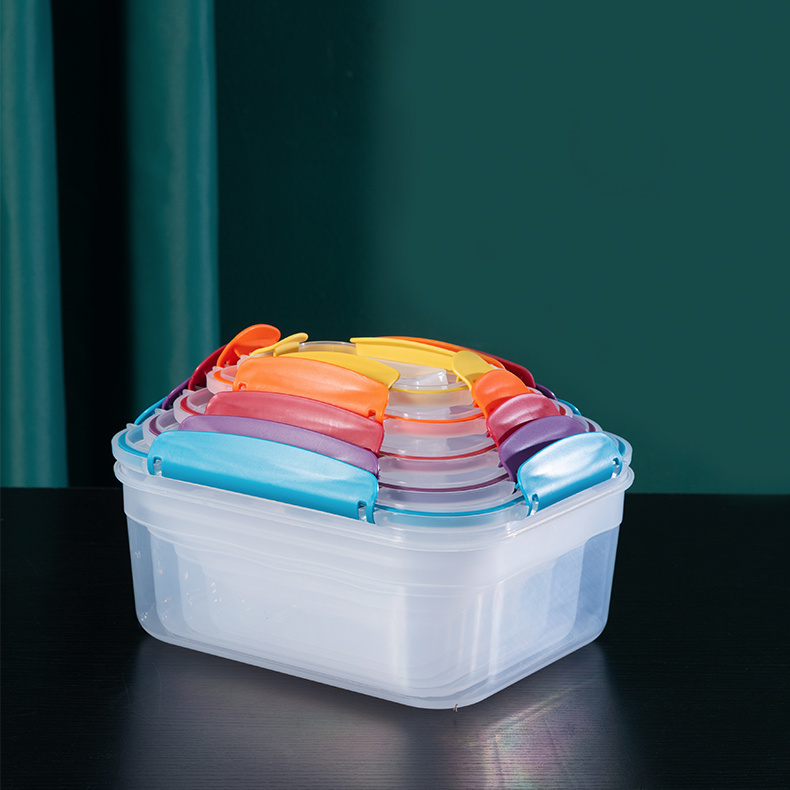Top Features to Look for in Plastic Storage Cereal Containers
Release time:
2024-11-18
Discover the ultimate guide to selecting the best plastic storage cereal containers. Explore essential features, benefits, and tips to keep your cereals fresh, organized, and easily accessible. Gain i
Top Features to Look for in Plastic Storage Cereal Containers
Introduction: The Importance of Quality Cereal Storage
In today’s fast-paced world, maintaining freshness and organization in our kitchens is crucial. Cereal is a breakfast staple for many households, making effective storage solutions essential. **Plastic storage cereal containers** offer a practical and efficient way to keep cereals fresh, free from pests, and neatly organized. This article dives deep into the top features you should consider when choosing the right plastic containers for your cereal.
Table of Contents
1. Understanding the Need for Cereal Containers
2. Essential Features to Consider
2.1 Material Quality
2.2 Size and Capacity
2.3 Sealing Mechanism
2.4 Design and Aesthetic Appeal
2.5 Transparency for Easy Visibility
3. Additional Features to Enhance Usability
3.1 Stackability for Efficient Storage
3.2 Ease of Cleaning
3.3 BPA-Free Options for Safety
4. The Role of Ergonomics in Cereal Containers
5. Comparing Different Styles of Cereal Containers
6. Tips for Maintaining Freshness and Quality
7. Frequently Asked Questions (FAQs)
8. Conclusion: Choosing the Right Cereal Container for You
1. Understanding the Need for Cereal Containers
Cereals can quickly lose their flavor and crunch if not stored correctly. **Plastic storage cereal containers** are designed to combat common issues such as moisture, pests, and air exposure. They not only help keep your food fresh but also make it easy to access your favorite cereals at any time.
2. Essential Features to Consider
2.1 Material Quality
Choosing the right material is paramount. Look for high-quality, food-grade plastic that is durable and resistant to cracks and breaks. **Polypropylene** and **polyethylene** are popular choices due to their strength and safety. Always check for certification marks that indicate the material is safe for food storage.
2.2 Size and Capacity
The size of the container should match your cereal consumption needs. Consider the type of cereals you typically purchase. For families, larger capacities may be necessary, while individuals might prefer smaller containers for single servings.
2.3 Sealing Mechanism
A robust sealing mechanism is crucial for preserving freshness. Look for containers with airtight seals that keep moisture and air out. Some containers feature silicone gaskets or locking lids that enhance the sealing capability, ensuring your cereals remain crunchy and fresh for longer.
2.4 Design and Aesthetic Appeal
While functionality is critical, the design of the container also matters. Choose containers that fit well within your kitchen decor. Some containers are available in sleek, modern designs, while others offer classic styles, allowing you to select a look that complements your kitchen aesthetics.
2.5 Transparency for Easy Visibility
Transparency is a practical feature that allows you to quickly identify the contents of the container. Clear plastic containers make it easy to see when you're running low on cereal, preventing last-minute grocery store trips.
3. Additional Features to Enhance Usability
3.1 Stackability for Efficient Storage
Maximizing kitchen space is essential, especially in smaller kitchens. Look for stackable cereal containers that can be neatly stored on shelves or in pantries without taking up too much room.
3.2 Ease of Cleaning
Containers should be easy to clean, ensuring that no residues or crumbs remain. Consider options that are dishwasher-safe or have wide openings for easy hand washing. This feature not only enhances hygiene but also prolongs the life of the containers.
3.3 BPA-Free Options for Safety
Safety should always come first when it comes to food storage. Select **BPA-free** plastic containers to avoid harmful chemicals that can leach into your cereals. Many brands now offer BPA-free options, ensuring peace of mind for health-conscious consumers.
4. The Role of Ergonomics in Cereal Containers
Ergonomics plays a crucial role in how we interact with our kitchen tools. Cereal containers with user-friendly designs, such as easy-grip handles or pour spouts, allow for effortless serving and reduce spills. Selecting ergonomically designed containers enhances your overall experience and convenience in the kitchen.
5. Comparing Different Styles of Cereal Containers
When it comes to styles, there are various options available in the market:
- **Traditional Canisters**: Often made of glass or ceramic, these canisters are beautiful but can be heavy and less practical for everyday use.
- **Plastic Containers**: Lightweight, durable, and often designed with modern features such as airtight seals.
- **Pop-Up Containers**: These containers feature a unique push-button mechanism to create an airtight seal; they’re stylish and practical.
Each style has its advantages and disadvantages, so consider your lifestyle and preferences when making a choice.
6. Tips for Maintaining Freshness and Quality
To extend the shelf life of your cereals, follow these tips:
- **Store in a Cool, Dry Place**: Avoid placing containers near heat sources or in humid areas.
- **Regularly Check for Pests**: Inspect your cereals and containers periodically to ensure no pests have infiltrated.
- **Keep the Containers Clean**: Regular cleaning will prevent any stale odors or contamination.
By following these tips, you ensure that your cereal remains fresh and delicious for as long as possible.
7. Frequently Asked Questions (FAQs)
What is the best material for cereal containers?
High-quality food-grade plastics like polypropylene and polyethylene are excellent options due to their durability and safety.
Are plastic storage cereal containers safe for food?
Yes, as long as you choose BPA-free and food-grade materials, plastic storage containers are safe for food storage.
Can I put cereal containers in the dishwasher?
Many plastic cereal containers are dishwasher-safe, but it’s essential to check the manufacturer’s guidelines for specific cleaning instructions.
How do I know if my cereal is still fresh?
Check for signs such as stale smell, loss of crunch, or discoloration. If any of these are present, it’s best to discard the cereal.
What should I do if my cereal container is cracked?
If your container is cracked, it’s advisable to replace it, as cracks can harbor bacteria and compromise the seal.
8. Conclusion: Choosing the Right Cereal Container for You
Selecting the perfect **plastic storage cereal container** involves considering various factors, including material quality, size, sealing mechanisms, and design aesthetics. By understanding your needs and preferences, you can find a container that not only keeps your cereals fresh but also complements your kitchen decor. Investing in quality containers will keep your cereals organized and make breakfast time simpler and more enjoyable. Take the time to explore your options, and you’ll find the ideal solution for your cereal storage needs.
More information
Tips for Maximizing the Use of Your Sealed Square Crisper
1. Keep it clean: Make sure to wash your Sealed Square Crisper between uses to prevent bacteria buildup. Use warm,apy water and a non-abrasive sponge to avoid scratching the plastic. Let it air dry before putting in fresh produce.
Introducing the Sealed Square Crisper for Fresher Food
Do you struggle with keeping your fruits and vegetables fresh? Tired of throwing away spoiled produce and wasting money? Look no further than the Sealed Square Crisper!
Instructions for using sealed square crisper for house
Due to the wear and tear during the cleaning process, the sealed square crisper for house will age to varying degrees, which will destroy the structure of the crisper and cause the additives in the plastic to migrate into the food.









